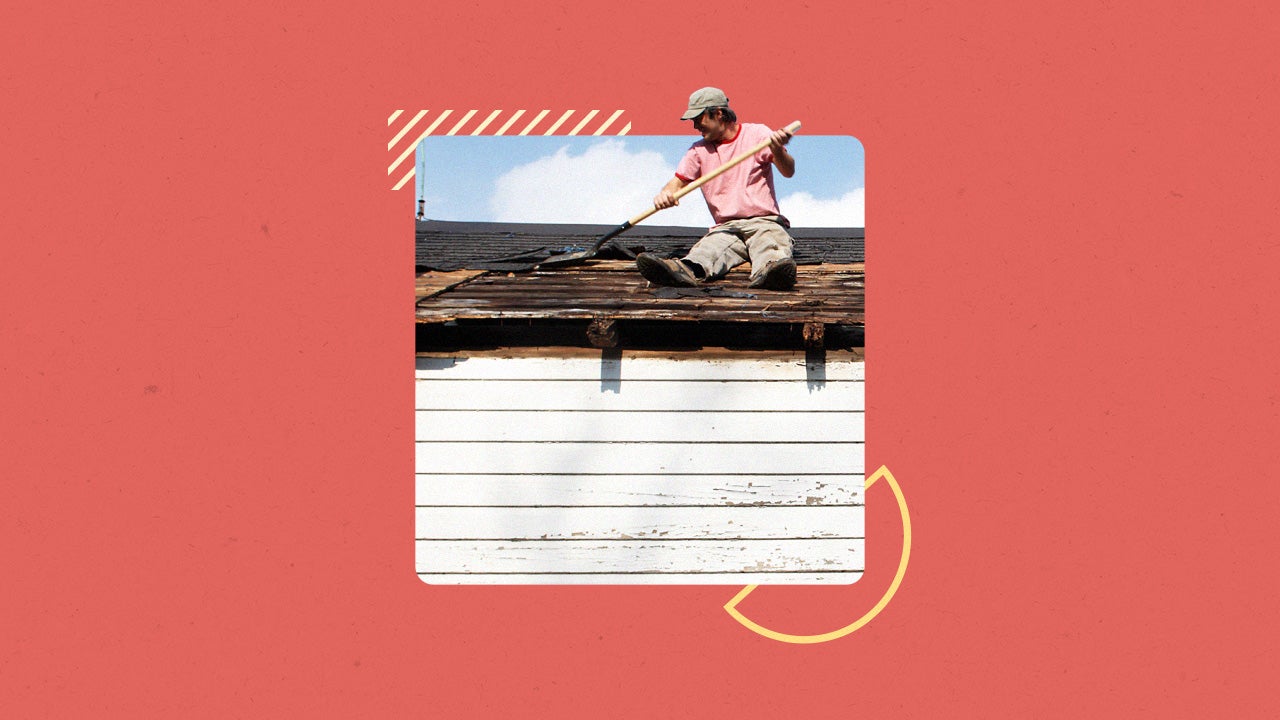Piggyback loans: What they are and how they work

Key takeaways
- An 80/10/10 piggyback loan is a type of loan that involves getting two mortgages at once: One is for 80 percent of the home’s value and the other is for 10 percent.
- The piggyback strategy lets you avoid private mortgage insurance or having to take out a jumbo loan.
- Homeowners shopping for a new place can adopt a variation on the piggyback strategy: using a home equity loan or credit line for the second, smaller mortgage.
Home prices are near record highs. If you don’t have enough in your piggy bank for a 20 percent down payment, you might be a candidate for a piggyback loan. Also called an 80/10/10 or combination mortgage, it involves getting two loans at once to buy one home. The strategy can save you money. Here’s what to know.
What is a piggyback loan?
In a piggyback loan, instead of financing a home purchase with a single mortgage, you’re doing it with two. You take out one big loan and a second, smaller one at the same time. The second, smaller loan essentially provides funds toward your down payment.
As a result, the piggyback loan cuts the need for you to pay for private mortgage insurance (PMI). Normally, you’d need to pay this monthly expense on conventional mortgages when you can’t come up with at least 20 percent in cash.
In addition, a piggyback loan can help navigate around some of the stricter requirements of a jumbo loan. A jumbo loan is a mortgage for an amount that exceeds federally-set limits ($806,500 for most of the country in 2025. If you’re eyeing a high-priced property and will need to borrow more than the “conforming loan limit” for your area, you’ll need a jumbo — normally. But, by separating the financing into two (smaller) mortgages, the size of your loan could avoid falling into the “jumbo” category.
How does a piggyback mortgage work?
In an 80/10/10 mortgage set-up, the first mortgage is for 80 percent of the property’s value, and the second piggybacking one is for 10 percent. The remaining 10 represents the 10 percent down payment that you contribute to the home purchase.
How are piggyback loans structured?
The 80/10/10 is a common piggyback structure, but it’s not the only one. Lenders also sometimes offer an 80/15/5 arrangement, says Greg McBride, CFA, chief financial analyst at Bankrate, which shrinks your down-payment obligation to just 5 percent. For instance, with a $400,000 loan, an 80/10/10 would involve a mortgage of $320,000, a second mortgage of $40,000 and a down payment of $40,000. Switch to an 80/15/5, and the second mortgage would be for $60,000, and the down payment falls to $20,000.
Types of piggyback mortgages
There are various types of piggyback loans, some of which you’re likely to have heard of before:
- Home equity loan: Home equity loans are a lump sum loan that typically allows existing homeowners to tap into the equity they’ve built up in their home. Equity is the amount of your home that you own outright, free and clear of any mortgage loan balance. In the case of a piggyback mortgage, the home equity loan is made at the same time as the mortgage you’re taking to purchase a home. The home equity loan becomes a second mortgage — piggybacking onto the first one — and the funds are used to cover a portion of the home purchase.
- Home equity line of credit: A home equity line of credit functions similarly to a home equity loan when used as a piggyback or second mortgage. You’d open the HELOC at the same time as the mortgage to purchase a home. Then, you’d use the funds from the HELOC to cover a portion of the home purchase.
- Down payment mortgage: Down payment mortgages function somewhat similarly to piggyback mortgages. It’s a loan that’s earmarked toward all or part of your down payment. It’s geared toward homebuyers who can’t put down 20 percent in cash toward the home purchase. Typically, this sort of loan comes from a formal down payment assistance program offered through a state housing finance authority. If it does, it often has reasonable interest rates, and may even be forgivable after a few years.
Pros and cons of 80/10/10 mortgages
Pros of 80/10/10 mortgages
- No PMI. The main upside to a piggyback loan is the chance to ditch private mortgage insurance. For a conventional loan borrower with 3.5 percent down, the average annual PMI premium ranges from 0.46 percent to 1.5 percent of the loan amount, depending on their credit score, according to the Urban Institute. With a piggyback loan, you can get out of those insurance payments without having to cough up 20 percent in cash, or to look for a smaller and cheaper home.
- No mumbo-jumbo. Because they’re riskier, non-conforming loans, jumbo loans typically come with the need for a higher credit score, a higher down payment and plenty of cash reserves. If the piggyback arrangement helps keep the financing within conforming limits, you don’t have to worry about the jumbo’s tougher qualifications.
- Less money down. A piggyback loan allows you to contribute much less cash than you normally would — only 10 percent of the purchase price, in the standard 80/10/10 loan scenario. Some lenders will even let you get by with 5 percent of the cost (the 80/15/5 piggyback).
Cons of 80/10/10 mortgages
- Your payments might change. The second piggybacking loan typically has a higher interest rate, and it’s usually variable, says McBride. So if the interest rate goes up, you’ll pay more.
- You have two sets of closing costs. If you take out a traditional second mortgage, you’ll have two bills for closing expenses. That can add up, eating into any potential savings from avoiding PMI.
- You might have trouble with refinancing. If your loans are through two different lenders, refinancing down the road might not be a simple process.
Piggyback mortgage requirements
Piggyback loans might help you get around some of the requirements of a jumbo loan, but they aren’t necessarily easy to qualify for either. The fact that you’re financing such a large percentage of your home purchase can raise red flags with lenders.
Expect to have your personal finances scrutinized to verify that you can indeed pay back both loans. You still need a strong credit score: about 700 or higher, though some lenders might offer them to people with scores as low as 680.
It’s wise to reduce your debt-to-income (DTI) ratio as much as possible before applying, too. You should aim for a DTI of 36 percent or less, including the repayments of both loans. Some lenders might be willing to go a bit higher than that.
How to get a piggyback loan
The piggyback strategy means a little more work, and a higher degree of difficulty. After all, you must apply for and close two loans rather than one. Here’s a brief breakdown of how it works:
- Research second mortgage lenders. With a piggyback strategy, you need to do your homework not just on your primary lender but also on your second mortgage lender. Compare second mortgage rates, and also requirements around credit scores, loan-to-value limits and debt-to-income ratios.
- Apply for your primary mortgage first, then the second. The first mortgage is your priority, but you will apply for both loans at essentially the same time.
- Respond to any questions from the lender. You might have to provide additional documentation. To keep the process on track, be sure to respond promptly to any inquiries.
Alternatives to a piggyback loan
Piggyback, or 80/10/10 mortgages, were more common 10 to 20 years ago, before a lot of low-down-payment mortgage programs became mainstream, says McBride. If you’re stressing over that 20 percent down payment, there are first-time homebuyer loans and down payment assistance programs that can help you move into a home for less upfront money without the added layer of a piggyback loan. Some options include:
- FHA loan – Backed by the Federal Housing Administration, an FHA loan allows you to get away with as little as 3.5 percent down on a home purchase. You can also qualify for this loan with subpar credit. The program requires a minimum credit score of 580 for a 3.5 percent down payment. If your credit score is between 500 and 579, you’ll need to put down 10 percent.
- Conventional 97 – Fannie Mae and Freddie Mac, the two government-sponsored enterprises, offer this type of mortgage. It’s available with as little as 3 percent down.
- VA loan – If you’ve served or are active in the military, you’re eligible for a loan backed by the U.S. Department of Veterans Affairs, and you don’t have to put any money down to get it.
With a low-down payment program, you’ll be able to write a smaller check, but depending on your lender, you might also need to go back to school. For example, Bank of America’s low-down-payment loan program stipulates that borrowers might need to complete homebuyer education courses, as do many state-sponsored HFA loans. However, investing a few hours of your time is a small price to pay to afford your own place.
Piggyback strategy for current homeowners
If you’re trying to sell your current home while buying another one, you can try a different strategy that works quite similarly to a piggyback loan. Rather than getting two mortgages on a new property, you can take out a loan secured by your current home to cover all or part of the down payment on the new one. After the sale goes through, you’ll be able to use the proceeds to pay off the home-secured loan.
There are a few types of financing you can use to do this, including a home equity loan or a HELOC.
For both home equity loans and HELOCs, you must have paid off or substantially paid down the mortgage on your current home: You have to have built up a significant ownership stake to borrow against, usually at least 20 percent of your home’s current value.
Additional reporting by Mia Taylor
You may also like

How your home can pay for emergency repairs

What is mortgage prequalification?

How to get a home improvement loan in 6 simple steps




